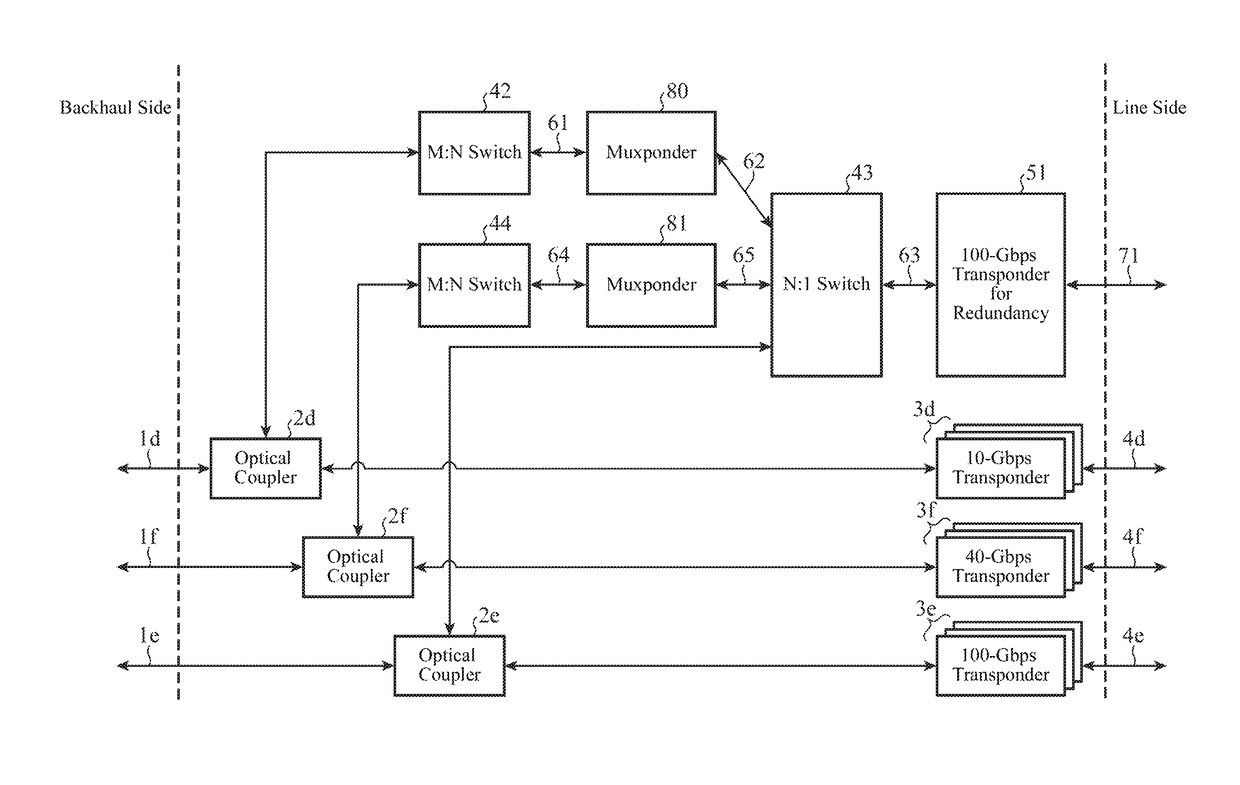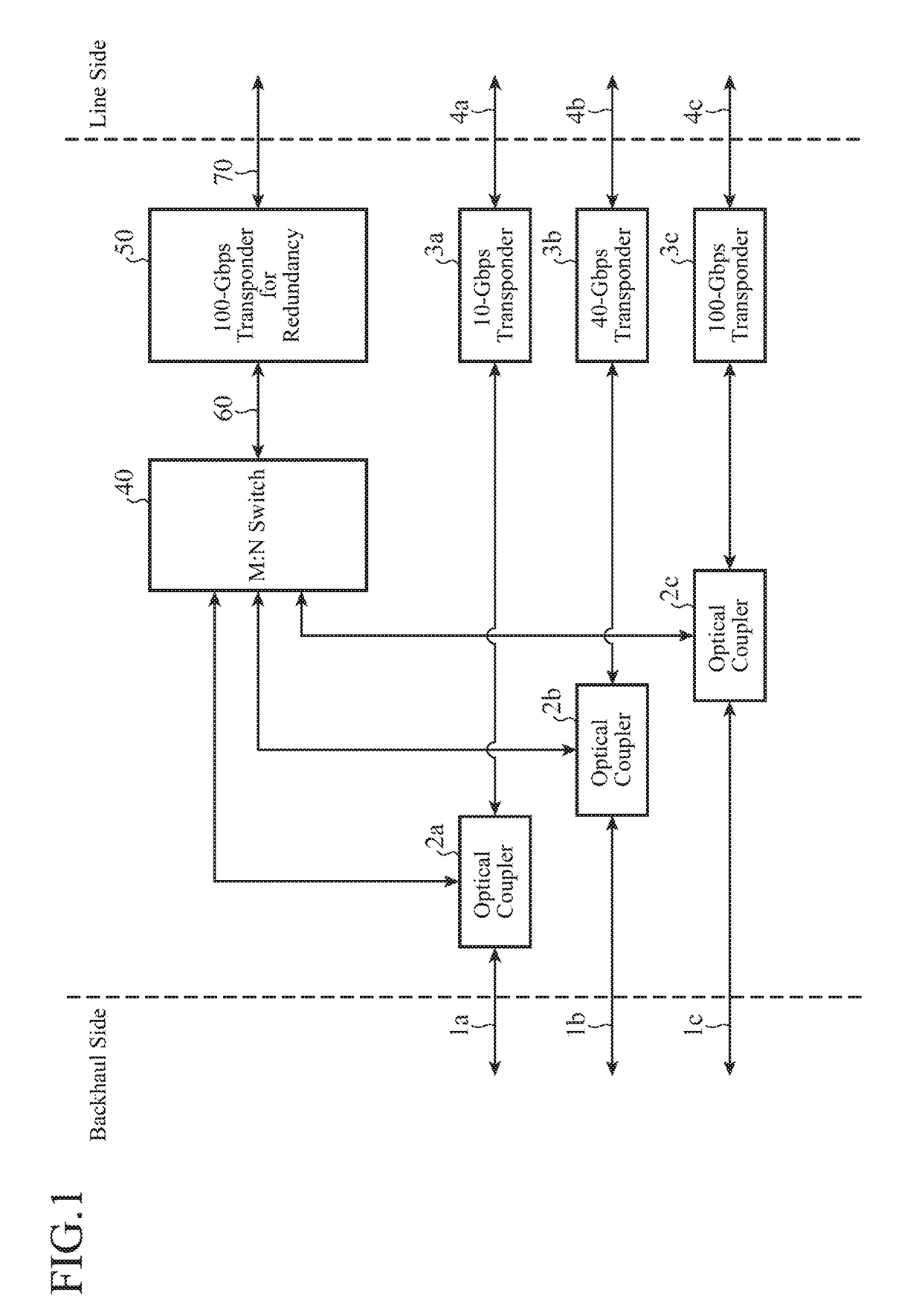Wavelength redundancy device and wavelength redundancy method
a wavelength redundancy and wavelength technology, applied in the field of wavelength redundancy devices and wavelength redundancy methods, can solve the problems of increasing the number of multiplexed wavelengths and the insufficient supply of new optical fiber networks, and achieve the effect of reducing the cost and installation space, and effective use of the band
- Summary
- Abstract
- Description
- Claims
- Application Information
AI Technical Summary
Benefits of technology
Problems solved by technology
Method used
Image
Examples
first embodiment
[0023]FIG. 1 shows an exemplary configuration of a terminal device including a wavelength redundancy device according to a first embodiment of the invention.
[0024]The terminal device includes optical couplers 2a to 2c that branch client signals 1a to 1c which are transmitted from a backhaul side; a 10-Gbps transponder 3a (working transponder) including one 10-Gbps-based client interface; a 40-Gbps transponder 3b (working transponder) including four 10-Gbps-based client interfaces; a 100-Gbps transponder 3c (working transponder) including ten 10-Gbps-based client interfaces; an M:N switch 40 (selector / switcher) that selectively outputs inputted signals; and a 100-Gbps transponder 50 for redundancy including ten 10-Gbps-based client interfaces. Note that FIG. 1 only shows components related to redundancy and omits components that perform processes such as wavelength multiplexing and amplification.
[0025]The client signal 1a is one 10-Gbps signal to be transmitted to the 10-Gbps transpo...
second embodiment
[0059]FIG. 6 shows an exemplary configuration of a terminal device including a wavelength redundancy device according to a second embodiment of the invention.
[0060]The first embodiment shows redundancy for a case in which there are different WDM transmission rates and client signals have the same transmission rate; on the other hand, the second embodiment shows redundancy for a case in which there are different WDM transmission rates and there are also a plurality of types of transmission rates of client signals.
[0061]The terminal device includes optical couplers 2d and 2e that branch client signals 1d and 1e which are transmitted from a backhaul side; d 10-Gbps transponders 3d (working transponders) (d is an integer greater than or equal to 1) each including one 10-Gbps-based client interface; e 100-Gbps transponders 3e (working transponders) (e is an integer greater than or equal to 1) each including one 100-Gbps-based client interface; an M:N switch 42 and an N:1 switch 43 that s...
PUM
 Login to View More
Login to View More Abstract
Description
Claims
Application Information
 Login to View More
Login to View More - R&D
- Intellectual Property
- Life Sciences
- Materials
- Tech Scout
- Unparalleled Data Quality
- Higher Quality Content
- 60% Fewer Hallucinations
Browse by: Latest US Patents, China's latest patents, Technical Efficacy Thesaurus, Application Domain, Technology Topic, Popular Technical Reports.
© 2025 PatSnap. All rights reserved.Legal|Privacy policy|Modern Slavery Act Transparency Statement|Sitemap|About US| Contact US: help@patsnap.com



